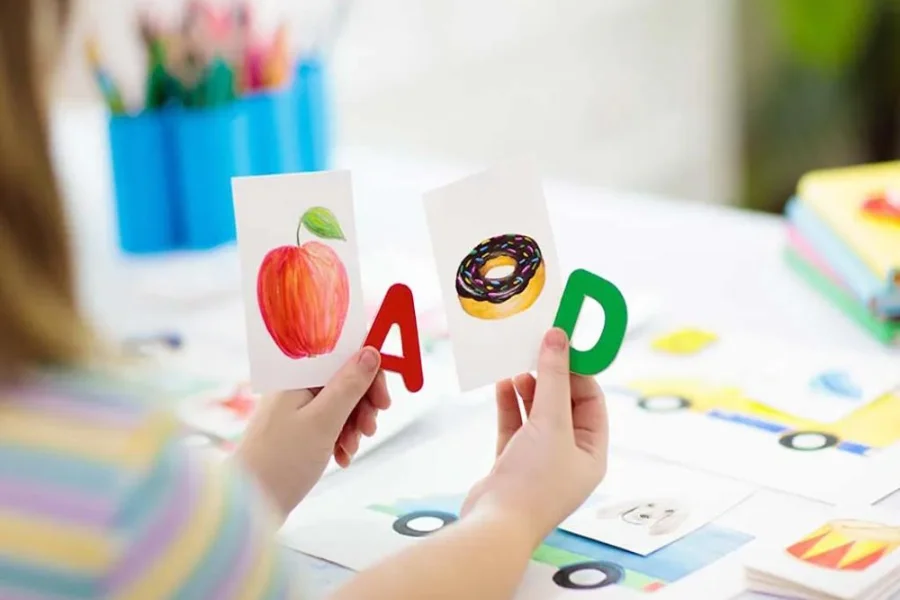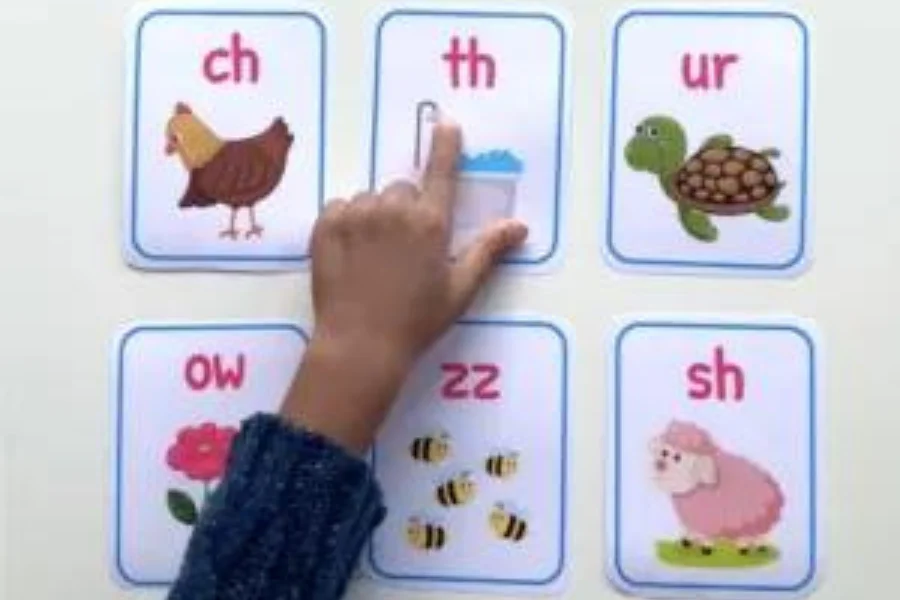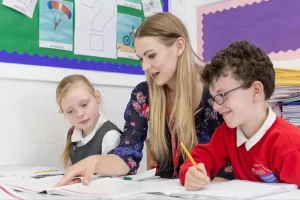
Source: adobe
Phonics is an essential teaching aspect for inculcating reading and writing skills, especially for young students. Considering the different types of phonics is vital for teachers and parents equally. So, What are the 4 types of Phonics? This question is asked by those keen to support children’s learning. Each type provides a unique aspect to learning how to blend letter sounds.
In this blog, we will look at What are the 4 types of Phonics, their unique traits, and how they increase reading and writing capacities. What are the 4 types of phonics, and how do they are different? We’ll answer these questions, making a clear and understanding explanation for all the 4 types of Phonics.
Synthetic Phonics
Definition and Approach
Synthetic Phonics is a way where students learn by saying individual sounds (phonemes) separately and then merging them to form words. Out of the 4 types of Phonics, this type is prepared and usually starts with simpler sounds, continuing to more complex sound blends.
Example
For example, in learning the word ‘flash’, learners first sound out /f/, /l/, /a/, /sh/ and then blend these to say ‘flash’.
Application
Among the 4 types of Phonics, this technique is reliable for early readers, building a solid base for decoding new words self-sufficiently.

Source: toodlerjunction
Analytic Phonics
Definition and Approach
Analytic Phonics takes a more holistic approach. Instead of sounding out letters individually, students learn to analyze whole words to detect phonemic patterns. Of the 4 types of Phonics, this type is less focused on individual phoneme sounds and more on larger units within words.
Example
Considering the word ‘strong’, a teacher might help students identify the /str/ blend by comparing it with ‘street’ or ‘stride’.
Application of one of the 4 Types of Phonics
Among the 4 types of Phonics, this technique fits students who have already started reading and are increasing their vocabulary.
Dial +919869866277 / +919869546913 for further details of the magnificent Phonics Teacher Training Course.
Visit here to have a look at the handout of the Phonics Teacher Training Course.
Embedded Phonics
Definition and Approach
From the 4 types of Phonics, this Embedded Phonics is integrated into text reading. This incidental, less systematic approach emphasizes learning phonics skills within the context of literature.
Example
During a reading session, when coming across the word ‘magic’, a teacher might discuss the /g/ sound made by ‘g’ in this context.
Application
This approach is beneficial in making phonics learning more relevant and engaging, as it is connected with actual reading experiences.

Source: parenting
Analogy Phonics
Definition and Approach
In Analogy Phonics, learners use their knowledge of phonograms to understand new words. Among the 4 types of Phonics, this one involves teaching students to use familiar word parts (like -at in ‘cat’) to read and decode unfamiliar words.
Example
A student familiar with ‘cake’ can apply this knowledge to decode ‘bake’ or ‘fake’.
Application
This approach among the types of Phonics particularly helps children interpret longer and more intricate words.
Dial +919869866277 / +919869546913 for further details of the magnificent Phonics Teacher Training Course.
Visit here to have a look at the handout of the Phonics Teacher Training Course.
Phonics teaching course
In the world of oral education, the meaning of phonics cannot be inflated. To provide for this need, the Phonics teaching course offered by Vidhyanidhi Education Society (Govt. regd.) stands as an inspiration for ambitious educators. This course is precisely designed to provide teachers with an understanding of the 4 types of Phonics and essential skills to effectively teach phonics.
Here’s a thorough look at what this course involves:
24 Hours of Intensive Training
The Phonics teaching course includes an intense 24-hour training program.
This intensive training makes sure that educators are carefully prepared to teach phonics with confidence and proficiency.
Each session is crafted to enhance understanding and practical application of phonics in educational settings.
UK-based Synthetic Phonics Teaching Methodology
The course follows the well-known UK-based Synthetic Phonics Teaching and Learning Methodology.
This method is broadly accepted for its effectiveness in teaching reading and writing.
It highlights the connection between sounds (phonemes) and their corresponding letter patterns (graphemes), a key feature in the types of phonics.

Source: wordunited
Audio-Visual Teaching Aids
To increase the learning experience, the course includes lectures that use audio-visual teaching aids.
This modern teaching method not only makes the learning method more pleasing but also provides various learning styles, making the understanding of phonics more available and effective.
Sounds Demonstration with Jingles, Stories, and Actions
A new feature of the Phonics teaching course is the displaying of sounds through jingles, stories, and actions.
This creative technique aims to remember and understand the different sounds, making the learning process fun and participative.
Practice 42 Sounds
An important feature of the course is the constant practice of all 42 sounds, which contain both letter sounds and diagraphs.
This extensive practice makes sure that educators are well-prepared to teach every part of phonics, supporting the various types of phonics practices.
Mock-drills
The course includes mock drills, providing a hands-on experience in phonics teaching.
These drills are designed to simulate real classroom scenarios, giving educators a practical understanding of how to apply their knowledge effectively.
Doubt-Solving and Question-Answer Sessions
To make sure of a broad understanding of the course material, there are keen doubt-solving and question-answer sessions.
These sessions allow educators to clear any doubts and gain deeper visions into the details of phonics teaching.
The Phonics teaching course provided by Vidhyanidhi Education Society (Govt. regd.) is a precisely systematic program, ideal for those keen to familiarize themselves with the types of Phonics and master the art of teaching phonics. By covering a broad range of teaching methods and guaranteeing detailed practice, this course stands as a valuable resource for educators to shine in the field of phonics education.
Join Vidhyanidhi’s Phonics Teacher Training Course – Elevate your teaching journey today!
Dial +919869866277 / +919869546913 for further details of the magnificent Phonics Teacher Training Course.
Visit here to have a look at the handout of the Phonics Teacher Training Course.
FAQs
How to become Phonics teacher?
To become a Phonics teacher, get a teaching degree, complete phonics training courses, and gain experience in literacy education.
How can I start Phonics Classes for kids?
Start Phonics classes for kids by getting certified in phonics, preparing a curriculum, and choosing a suitable teaching environment.
Why is Phonics important in early years?
Phonics is important in the initial years as it builds the base for reading, increases vocabulary, and develops language knowledge.



